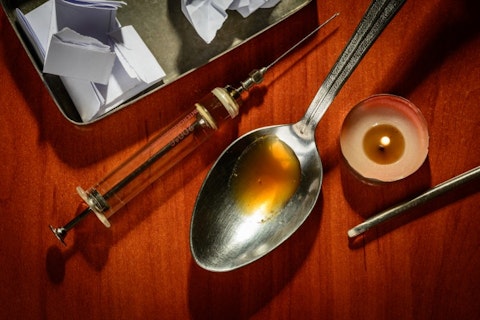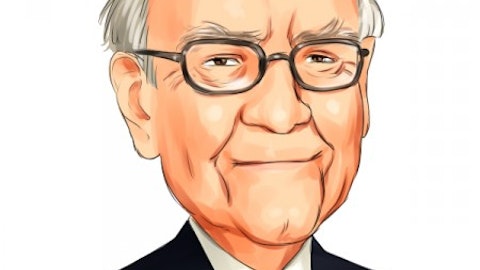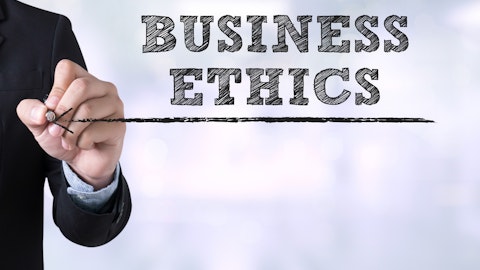Whether or not sugar is more addictive than drugs has been debated for years. In the last couple of years the discussion around the dangers of sugar has intensified, as a number of large economies, including the UK and U.S, announced plans to introduce a so-called “soda tax”, meant to increase the price of sugary drinks in order to cut the consumption of these beverages. The decision, while applauded by the World Health Organization and other health-related organizations, was not met so positively by beverage companies like The Coca-Cola Co (NYSE:KO) and PepsiCo, Inc. (NYSE:PEP). Speaking at the Dealbook Conference last year, PepsiCo, Inc. (NYSE:PEP) CEO Indra Nooyi said that the introduction of a soda tax in the U.S. won’t help reduce obesity in the country, and is simply being used by the government as a tool to increase tax revenue.
It’s no surprise that sugar is bad for our health, as it leads to obesity by tricking the brain into craving more. Sugar is a simple carbohydrate and whenever you drink soda or eat a candy bar, it is turned into glucose. An excess of glucose in the blood can be toxic, so the pancreas releases the hormone insulin in order to deal with the glucose. With time this process can break down, making people resistant to insulin, leading to even more insulin in the blood. Insulin also sends signals to fat cells, “telling” them to store the excess glucose from the blood as fat. So with more insulin and glucose in the bloodstream, more energy gets deposited into fat cells. Eventually, an increase in insulin can lead to type II diabetes.
Aside from leading to obesity, many studies have shown that sugar also has the same effect on the human brain as illegal drugs. Sugar is one of the primary fuels for brain cells, and therefore, the brain sees sugar as a reward, sending you signals to crave more sugary foods and drinks. As sugar leads to a spike in the level of glucose in the bloodstream, it gives you a sugar “high”, followed by a quick drop as more insulin is released to handle the glucose spike. The sudden drop in sugar can make you feel dizzy, anxious and hungry (as your blood sugar actually drops below normal levels after the release of insulin, cortisol is released in response, which has the effect of making you hungry), forcing you to want more sweets.

Last year, researchers at Queensland University of Technology found that sugar can have the same effect on dopamine levels as cocaine. Moreover, over time, it can lead to a fall in dopamine levels, leading to people craving more and more sweets in order to maintain the same level of dopamine. A decline in dopamine can be dangerous, as it can lead to depression and anxiety. Moreover, the same researchers found that abstaining from chronic consumption of sugar can have the same withdrawal effects as quitting drugs.
With this in mind, the question is whether the introduction of the soda tax and the possible introduction of similar taxes on foods that contain high levels of sugar represents the first step towards declaring sugar a controlled substance like alcohol and tobacco, or even like illegal drugs such as heroin and cocaine. History is full of examples of products that are now considered illegal which were sold over-the-counter in the past and even were marketed by well-known companies. In the past, the original Coca-Cola contained cocaine and Bayer sold heroin as a cough remedy at the end of the 19th century.
Let’s take a closer look at some illegal products and substances that are now considered dangerous and illegal in most countries, but were easily available a century ago as ponder whether sugar could ultimately meet the same fate to some extent. For further reading on sugary drinks check out the list of the 17 Most Sugary Drinks in the World.
Cocaine in Coca-Cola (and other products)

MAHATHIR MOHD YASIN / Shutterstock.com,
The most well-known case is obviously Coca-Cola. It’s still debated to this day whether the beverage, which currently only contains a high amount of sugar, really contained cocaine. The reason for the suspicions was the fact that the original Coca-Cola contained extract of coca leaves, the same plant that is used to extract cocaine. Coca-Cola was first developed by John Pemberton, who wanted to patent it as a medicine, and in 1885, the product received the name based on its two “medicinal” ingredients: coca leaves extract and kola nuts. According to Snopes.com, Coca-Cola did indeed contain some cocaine at the beginning of the 20th century, 1/400 of a grain per ounce of syrup. However, by 1929, The Coca-Cola Co (NYSE:KO) made the drink completely “drug-free”. It should be pointed out, though, that back in 1885, lots of medicines contained cocaine.
Follow Coca Cola Co (NYSE:KO)
Follow Coca Cola Co (NYSE:KO)
Receive real-time insider trading and news alerts
Methamphetamine (Meth)

Maxal Tamor/Shutterstock.com
Breaking Bad, aside from being an amazing TV show, also put methamphetamine and its dangers in the spotlight. According to the United Nations Office of Drugs and Crime (UNODC) 2016 World Drug Report, seizures of methamphetamine increased by 21% to 108 tons in 2014. However, the same drug that helped Walter White solve his financial problems and eventually ruined his life was developed with some “noble” intentions back in 1982. It was created to help people stay alert and was widely used during the Second World War by both Axis and Allied troops. In the 1950s, doctors prescribed methamphetamine as a diet pill and antidepressant.
Mrs. Winslow’s Soothing Syrup

Africa Studio/Shutterstock.com
Morphine is another drug that was once legal and used in many so-called “patented medicines” that were sold over-the-counter. Mrs. Winslow’s Soothing Syrup is one of the more well-known “patented medicines” sold as a medicine to soothe teething babies. The product was supposedly developed by Mrs. Charlotte N. Winslow, who worked as a nurse, and contained morphine and alcohol. It was manufactured by Jeremiah Curtis, Mrs. Winslow’s son-in-law, and Benjamin A. Perkins beginning in 1849. In 1911, the American Medical Association issued a publication in which it accused Mrs. Winslow’s Soothing Syrup of leading to death in children. The product was still sold until 1930.
Bayer Heroin

Copyright: bialasiewicz / 123RF Stock Photo
Bayer AG (ADR) (OTCMKTS:BAYRY), one of the biggest drug companies in the world, sold Heroin at the end of the 19th century. The drug was sold in bottles under the “Heroin” brand and was even suggested as a remedy against coughing for children. Only closer to the beginning of the 20th century was it discovered that heroin leads to addiction and in 1914, the U.S government restricted its use to prescription-only. In 1925, the drug was banned altogether by the FDA.
Follow Bayer Ag (OTC:BAYRY)
Follow Bayer Ag (OTC:BAYRY)
Receive real-time insider trading and news alerts
Disclosure: None




